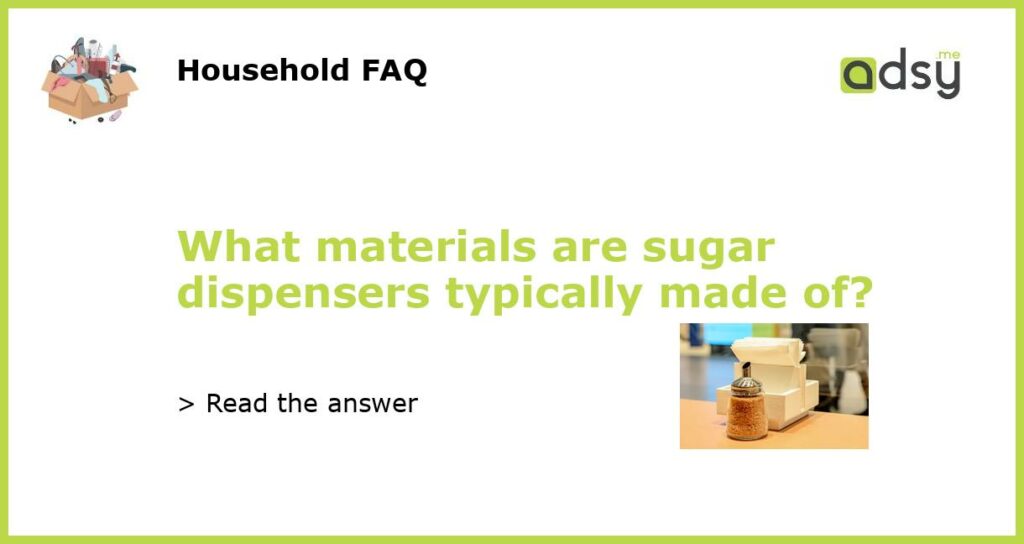Sugar Dispensers: Exploring the Materials Used
Sugar dispensers are household items that are commonly found in kitchens and dining areas. They provide a convenient way to store and dispense sugar, making it easily accessible for coffee, tea, and baking needs. Sugar dispensers come in various shapes, sizes, and materials, each with its own set of advantages and disadvantages. In this article, we will explore the different materials that sugar dispensers are typically made of.
Glass
Glass is one of the most common materials used in sugar dispensers. It offers a transparent and elegant look that complements any dining table or countertop. Glass sugar dispensers allow users to easily see and measure the amount of sugar remaining, ensuring that they never run out at unexpected times. The non-reactive nature of glass also prevents any unwanted odors or flavors from seeping into the sugar. However, glass sugar dispensers are more fragile compared to other materials, which means they need to be handled with care to prevent breakages.
Ceramic
Ceramic sugar dispensers are another popular choice among homeowners. They are known for their durability and ability to withstand high temperatures, making them suitable for both hot and cold beverages. Ceramic sugar dispensers can come in a variety of colors and designs, allowing users to match them to their kitchen or dining decor. However, ceramic can be prone to chipping or cracking if mishandled, so caution is needed when using and cleaning them.
Plastic
Plastic sugar dispensers offer a more affordable and lightweight option compared to glass and ceramic. They are often made from BPA-free plastic, ensuring that they are safe for food contact. Plastic sugar dispensers are also more durable and resistant to breakages, making them suitable for households with children or for use in outdoor settings. However, one downside of plastic sugar dispensers is that they may absorb odors or flavors over time, which could affect the taste of the sugar stored inside. It is important to clean plastic sugar dispensers thoroughly to prevent any residue build-up.
Stainless Steel
Stainless steel sugar dispensers are known for their sleek and modern appearance. They are highly resistant to rust and corrosion, making them a durable option that can withstand heavy use. Stainless steel sugar dispensers are also easy to clean and maintain. However, they may not be transparent like glass or ceramic, so users will not be able to see how much sugar is left inside without opening the dispenser. Some stainless steel sugar dispensers may also have a metallic taste that can affect the flavor of the sugar.
Wood
Wooden sugar dispensers provide a rustic and natural aesthetic to any kitchen or dining area. They are often crafted from high-quality, food-safe woods, such as bamboo or acacia. Wood sugar dispensers are durable and resistant to moisture, ensuring that they can withstand the test of time. However, it is important to note that wood is a porous material, which means it can absorb moisture and odors if not properly cared for. Regular oiling and cleaning are necessary to maintain the appearance and functionality of wooden sugar dispensers.






